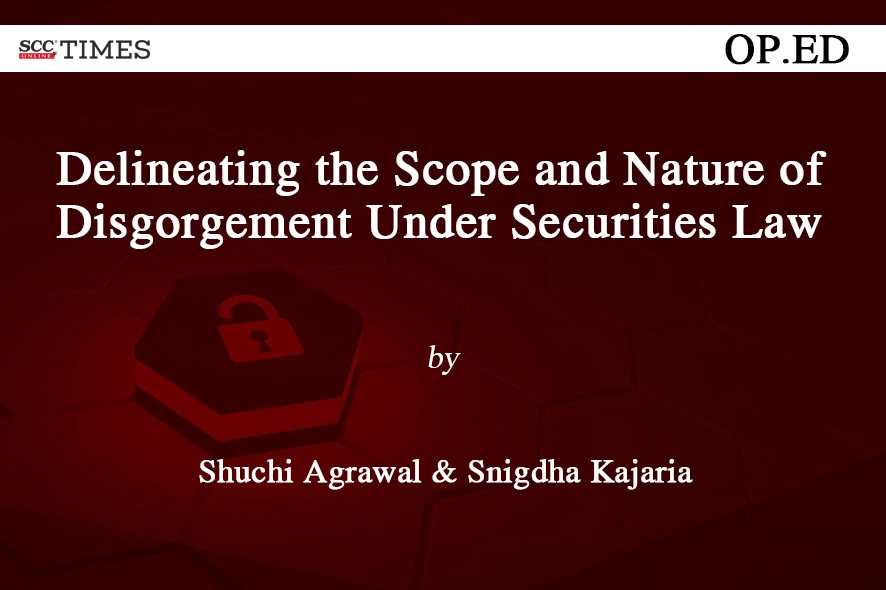
Limits of the Self
Deconstructing Reserve Bank of India’s Framework on Self-Regulatory Organizations for Regulated Entities
Conceptualizing Regulation & Self-Regulation
Regulatory instruments are ordinarily characterized by four pillars:
- First, the regulatory instrument must be aimed at a specified target, which is the subject of the regulation and bearer of non-compliance costs.
- Second, such instruments must be framed and enforced by a regulator.
- Third, such instruments must make positive or negative commands, i.e., regulatory directions to do or not do certain acts.
- Fourth, the instrument must set out consequences for non-adherence to commands.
Conventionally, ‘self-regulation’ is viewed as a first-level alternative to traditional government regulation. It refers to any system of regulation in which the regulatory target – either at the individual-firm level or sometimes through an industry association that represents targets – imposes commands and control over itself. Self-regulatory organizations (SROs), therefore, are composed of members who typically band together to navigate self-imposed regulatory norms in addition to ensuring obedience to state-mandated rules. This may be contrasted with state regulation, which is interested solely in ensuring market integrity and consumer welfare.
SRO governance is also more flexible, wherein members are typically at liberty to govern themselves provided they remain transparent, competent, and compliant. Command-and-control, or traditional state regulation, albeit built on the same pillars, is relatively more rigid, particularly for the financial markets, in view of public welfare concerns. Finally, SROs have greater on-ground presence and, therefore, more enhanced information-access capacities. Traditional regulation, in this respect, is limited to some degree by the macro-regulatory objectives it seeks to fulfill.
Notably, a second-level alternative to government regulation is what academics refer to as meta-regulation or regulation of the regulator. Meta-regulation refers to ways that external regulators deliberately seek to induce targets to develop internal and self-regulatory responses to public problems. Irrespective of the form of alternative regulation, an effective regulatory instrument must stand firmly on the four pillars stated above.
RBI Framework on Self-Regulatory Organizations for Regulated Entities
In October 2023, the Indian central bank, the Reserve Bank of India (RBI), announced its decision to issue an omnibus framework on recognition of SROs for regulated entities (REs) of the RBI (SRO Framework). In essence, the primary intention of the SRO Framework is to enhance compliance culture for SRO members, along with the creation and maintenance of information architecture and enable a consultative policy-making process amongst state and non-state actors.
Characterizing an SRO
Accordingly, the SRO Framework lays down certain characteristics of an SRO, emanating from three primary tenets of credibility, objectivity and responsibility. An SRO must be characterized by sufficient authority emanating from membership agreements, including provisions reflecting strong governance mechanisms, well-defined and consultative processes to make rules relating to the conduct of its members, endeavors to develop a compliance-driven sectoral ecosystem, standardized dispute resolution mechanisms and surveillance monitoring.
Duality of Obligations
The RBI also mandates two levels of SRO obligations – first, towards the members, and second, towards the RBI. Given that an SRO’s obligations to members would arguably flow from the terms of membership agreements, the SRO Framework recognizes the same and sets out heads of responsibility, such as membership fees, code of conduct, dispute resolution, and inward (i.e., RE) and outward (i.e., public) knowledge building. SRO obligations towards the RBI are largely compliance, reporting, and intimation-based, which is well within RBI’s regulatory ambit, viz. REs, otherwise.
Eligibility & Membership
The eligibility criteria set out under the SRO Framework requires the SRO entity, i.e., the applicant, to be set up as a ‘not-for-profit’ company or Section 8 company (Section 8 Co) under the Indian Companies Act, 2013 (Companies Act), having a diversified shareholding pattern with no single entity holding more than ten percent of its paid-up share capital (either singly, or acting in concert). Under the Companies Act, a Section 8 Co is permitted to establish itself upon a grant of license and thereafter apply profits or other income only towards the promotion of specified objects. Given that a Section 8 Co is not permitted to predominantly undertake profit-making activities, the activities of the SRO should be, in theory, aligned with ‘non-profit’ objectives (i.e., the regulatory objectives of the RBI).
Further, the payment of dividends to company members against equity contribution is prohibited under such a structure. As under the Companies Act, the intent here could be to eliminate conflicts of interest among SRO members by negating monetary rewards from a vehicle that is intended to operate towards such ‘non-profit’ objectives.
Governance & Management
Lastly, the SRO Framework also prescribes governance guidelines anchored in transparency, professionalism, and independence. It requires embedding provisions in the bye-laws on director functioning and processes for resolution of conflicts of interest. In terms of director qualifications, the guidelines empower the SRO Board to frame ‘fit and proper’ criteria and require a minimum of one-third of its members to be independent. Additionally, the guidelines also mandate strict reporting of adverse director information, to the RBI.
A Three-Pronged Challenge
The SRO Framework, while a positive push towards delegated regulation, arguably poses a three-fold challenge from an implementation standpoint:
First, the SRO Framework poses a potential ‘agency challenge’ when one party, the principal (here, the RBI), depends on the actions taken by another party termed the agent (here, the SRO). The problem is said to lie in motivating the agent to act in the principal’s interest as a first priority rather than its own interest. Notably, the RBI ‘expects’ SROs to uphold principles of good faith, promote best business practices, and avoid conflicts of interest in its operations. In effect, however, the SRO Framework does not appear to set out any incentives, in the form of consequence-avoidance, in terms of hard sanctions or penalties, that would deter SRO members from acting contrarily.
The SRO Framework also poses a potential ‘intra-SRO’ agency challenge – with the SRO as the principal, and SRO Board directors, as its agents. In the absence of negative obligations and high discretion, SRO directors may nudge policies suited to benefit larger REs, as opposed to those also aligned with smaller RE interests, despite the guidance mandate imposed on the latter. Even with consequences, ‘non-monetary’ incentives, such as pushing for sectoral standards focused on larger RE interests, may be equally strong to drive self-interested director conduct. We may refer to this as ‘adhesive policy-making’, similar to the concept of ‘adhesive contracts’ particularly seen in the insurance sector, where one party has relatively more bargaining power to set the terms of engagement, than the other.
Second lies the ‘governance’ challenge of director integrity. As noted above, the SRO Framework mandates the prescription of a ‘fit and proper’ criterion framed by the Board of an SRO on an ongoing basis but does not set out the principles and contours for such criteria. Unlike the RBI’s Master Direction for elected directors on the Boards of public sector banks, the SRO Framework leaves the formulation of such criteria almost entirely to the SRO itself. Given that governance is a post-recognition activity, such unchecked appointment and qualifications powers may create conflicts in SRO management, both viz. the RBI’s objectives and those of smaller, more nascent REs.
Third, drawing from the argument above on ‘adhesive policy-making’, is the final ‘inclusivity challenge’. While sectoral representation is one of the entry points for SROs, inclusion on paper and in reality, are entirely different. The SRO Framework recognizes ‘membership agreements’ as the source of SRO authority over RE members, and rightly so, emphasizes upholding ethical, professional and governance standards for such members, particularly in terms of guidance for smaller REs. It does not, however, illustrate the substance or form of such guidance, leaving it largely to the discretion of SRO management. The risk posed is that of low incentive for, and therefore, inadequate assessment of diverse RE concerns within the standard-making conversation.
Is the SRO Framework Sufficient to Cure Banking Regulation Bottlenecks?
The SRO Framework is a significant move towards ‘delegated regulation’ and shows immense promise to reign in industry confidence and regulatory insight for financial sector entities operating under the aegis of the RBI. Arguably, it is a form of meta-regulation in view of the fact that the SRO members as ‘shadow regulators’, still continue to be regulated by the RBI at the highest level. However, the SRO Framework, at present, is ripe for greater nuance on the manner of addressing some of the historical and persistent challenges associated with SROs in the financial sector in terms of interests, governance, and skin-in-the-game.



